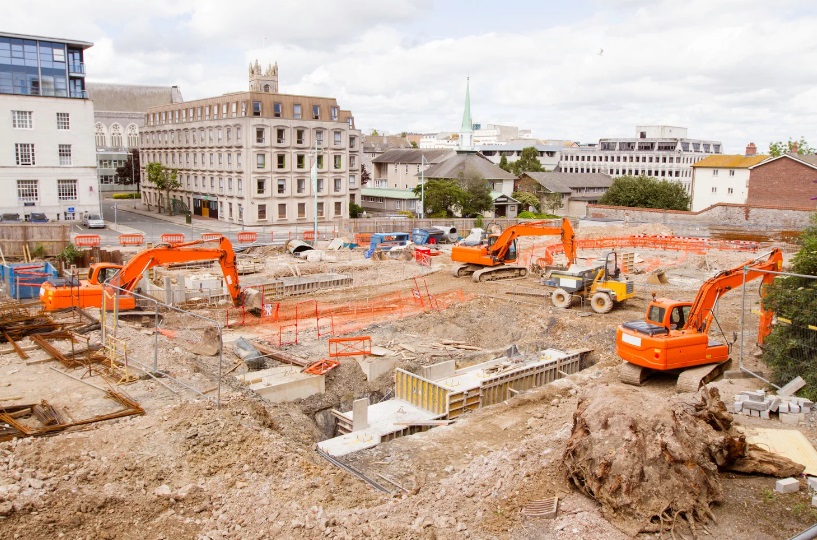Construction Industry Listings
Reason for Adding the Construction Industry to the Quotidian Small Business Directory
The Quotidian Small Business Directory serves as an essential platform to connect local small businesses with consumers and stakeholders in a community. Including the construction industry in this directory would significantly enhance its value, serving both business owners and the broader community. Construction is a foundational sector that impacts nearly every facet of the economy, from housing to infrastructure development. Here’s a detailed rationale for why the construction industry should be incorporated into the Quotidian Small Business Directory:
1. Economic Significance of the Construction Industry
The construction industry plays a vital role in the local and national economy. It generates jobs, drives demand for a wide range of materials and services, and contributes substantially to GDP. Even small-scale construction businesses, such as contractors, builders, and repair services, have a profound impact on community growth and development. They help build homes, offices, roads, and other infrastructure that contribute to the quality of life and economic activity in any region. Adding construction businesses to the directory would ensure that these economic drivers receive the visibility and support they deserve.
Moreover, small construction firms are the backbone of the industry. According to data from the U.S. Census Bureau, over 80% of construction firms have fewer than 20 employees. These small companies handle everything from residential renovations to small commercial projects. Their inclusion in a directory dedicated to small businesses like the Quotidian Directory would provide them with the recognition and networking opportunities needed to thrive in competitive markets.

2. Demand for Local Construction Services
Consumers and businesses alike rely heavily on local construction companies for a variety of needs. Whether it’s home renovation, office repairs, or building extensions, local contractors are often the first point of contact. Adding the construction industry to the Quotidian Small Business Directory would make it easier for residents and business owners to find reputable local contractors, electricians, plumbers, and handymen who can meet their construction and repair needs. This supports local economic circulation by keeping money within the community, which strengthens the financial stability of the region.
Additionally, construction businesses offer specialized services such as roofing, masonry, or electrical work. By listing these in the directory, consumers can easily compare and choose providers that meet their specific project requirements, fostering transparency and trust. This is particularly important in an industry where quality, reliability, and experience are crucial in ensuring customer satisfaction and safety.
3. Supporting Small and Medium-Sized Enterprises (SMEs)
Including construction in the Quotidian Directory directly aligns with the goal of supporting small and medium-sized enterprises (SMEs). Construction SMEs often face significant challenges in competing against large, well-established corporations. The directory could help bridge the gap by offering these smaller companies a platform to showcase their services, credentials, and portfolio of work. This would increase their visibility in local markets, giving them a fighting chance against larger firms with bigger marketing budgets.
Furthermore, many consumers prefer to hire local, small businesses because they often offer more personalized service and have a vested interest in the community. By making it easier for consumers to discover these companies, the directory would encourage community members to support local businesses, fostering a sense of loyalty and strengthening the local economy.
4. Facilitating Collaboration and Networking Opportunities
Construction is a collaborative industry by nature. Contractors, architects, engineers, material suppliers, and designers often work together on projects. Including construction businesses in the Quotidian Directory would create a space for networking and collaboration within the industry. Smaller construction companies could connect with local suppliers or subcontractors, making it easier to complete projects efficiently and cost-effectively.
Moreover, the directory could act as a hub for potential partnerships. For instance, a general contractor might use the directory to find specialized service providers such as electricians or HVAC experts for a larger project. By making it easier to form these connections, the Quotidian Directory would add real value to the construction sector, improving the productivity and quality of projects in the local area.
5. Promoting Innovation and Sustainability
The construction industry is undergoing significant changes, particularly in terms of sustainability and innovation. As consumers become more conscious of environmental issues, there is a growing demand for green construction practices and sustainable materials. Small businesses in the construction sector are often at the forefront of these innovations, offering eco-friendly solutions such as solar installations, energy-efficient building designs, and sustainable materials.
Adding construction businesses to the Quotidian Small Business Directory would give them a platform to showcase these innovative practices, helping to promote environmentally conscious options to consumers. This could also serve as an educational resource for homeowners and business owners interested in making their properties more sustainable.
6. Enhancing Directory Diversity and User Appeal
The Quotidian Small Business Directory already caters to a variety of businesses, from retail to professional services. Including the construction industry would add another layer of diversity, expanding the range of services that the directory offers to users. Consumers often look for a one-stop resource where they can find everything from local restaurants to home repair services. By incorporating construction companies, the directory would become more comprehensive and valuable, increasing user engagement and satisfaction.
This diversity would also attract a broader audience. For example, someone looking for a contractor might also discover other small businesses in the area, such as hardware stores or interior designers. This cross-pollination of interests can lead to more traffic for all listed businesses, creating a thriving ecosystem where multiple industries benefit from each other’s presence.
7. Community Development and Local Infrastructure
Construction companies are directly involved in building the infrastructure that supports local communities. By including them in the Quotidian Small Business Directory, the directory supports not only the businesses themselves but also the broader community’s development. From public works projects to residential building, construction companies shape the physical landscape of a community, contributing to its growth and modernization.
When local governments or private developers look for contractors for new projects, having a local directory that includes construction companies makes the procurement process smoother. It also promotes the hiring of local firms, ensuring that investments in infrastructure benefit the community directly.
The construction industry is integral to both economic growth and community development, making it a natural fit for the Quotidian Small Business Directory. Its inclusion would provide substantial benefits, from supporting small businesses to fostering collaboration and innovation, all while enhancing the overall value and appeal of the directory. By connecting consumers with local construction services, the Quotidian Directory can become an even more indispensable tool for promoting local economic growth and ensuring a thriving, interconnected community.























